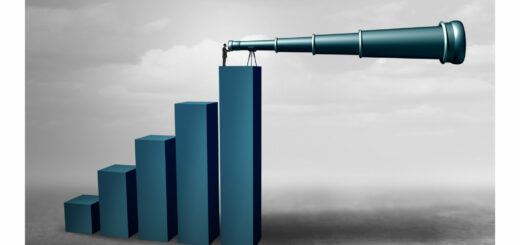Italy forecast hotel performance for summer 2021
Before going through future months’ analysis, let us begin by analyzing occupancy rate and RevPAR figures for the mountain and city cluster by month, from November 2020 to February 2021, compared with same period last year. Just as a reminder, RevPAR (Revenue per available Room) corresponds to the average revenue earned from each available room, so it takes into account both sold and unsold rooms.
Results November through February: mountain and city locations

As shown in the chart above, the results were predictably lower than pre-Covid levels, and this is clearly due to the restrictions on movement between regions and between Italy and other countries, as well as the closure of ski resorts, which lasted throughout the entire winter season.
However, within an undoubtedly complicated season, it is well worth mentioning the recovery that took place in February, in which period the sample of properties examined by us achieved an average occupancy of 49% and a 70€ RevPAR.
We specify that, as a result of government restrictions, some of the mountain properties decided to close throughout the analysis period, thus the sample comprises only 20 such properties that remained open in recent months and were busy mainly during the weekends, hosting customers from within the same region and neighboring areas willing to spend a few days of relaxation in contact with nature and seeking to escape temporarily from the gloomy situation that we are living in.
The higher figures for February are, in part, also positively impacted by properties located in regions that during that month remained in the yellow zone for extended periods of time (such as Lombardy and Veneto), therefore with moderate risk, greater freedom of movement, and a larger number of open businesses. Furthermore, the sample includes some properties that, due to being located near Cortina d’Ampezzo, were able to benefit from the World Ski Championships held in February, which, albeit closed to the public owing to Covid-related measures, still generated a fair amount of demand (athletes, journalists, technical staff, etc.).
Let us now move on to the analysis of the final figures for cities (including major art cities such as Rome, Milan, Florence, Turin, Naples etc.), as before, from November to February and compared to the pre-Covid period.

In this case, likewise due to restrictions, closures, and a drastic reduction of leisure customers, both Italian and especially international, we record lower figures in comparison with the previous year. However, individual business customers who needed to travel for work purposes, never stopped traveling, and being able to move across all regions (regardless of color zone classification) by providing a self-certification form, have represented and continue to represent (along with people traveling for health reasons) the main source of demand in recent months for city properties, thus allowing them to remain open with financially sustainable results and achieve a positive GOP.
In addition to this “hard core” of business customers (particularly for hotels that offer services such as restaurant, parking, fast and stable Wi-fi and boast an excellent online reputation), the progressive improvement in results over the last 4 months should also be noted, both in terms of occupancy and RevPAR.
The figure relating to February, the best of the last 4 months (since the second wave began), is certainly linked to the improvement of the epidemic curve (in terms of decreasing positive cases and hospital admissions) which resulted in an increasing number of regions returning to yellow zones at a national level (leading to an easing of restrictions), which in turn produced a small increase in leisure demand (although regional and limited especially to weekends, aided by spells of spring-like weather)
Occupancy on the books for March and April
Let us now look at the occupancy on the books figures for March and April for the 2 above-mentioned clusters

For mountain destinations we are currently recording a 15% occupancy in March and 6% occupancy in April, while for cities we are registering a provisional occupancy of 40% for March and 7% for April.
Figures for mountain destinations are certainly negatively impacted by the last Prime Ministerial Decree, which prolonged the closure of ski resorts until April 6.
By contrast, as far as cities are concerned, we continue to record a significant demand flow – as has been the case in the last few months – especially close to stay date and from business customers (hence with peak occupancy between Monday and Thursday).
Clearly, we will have to confirm over the next two months whether and how much the resurgence of infections and the reinstatement of restrictions might again slow down what appeared to be a performance curve on its way up (occupancy and RevPAR).
Occupancy on the books and ADR for next Summer
Lastly, let us review occupancy and ADR figures (updated to 21st March 2021) for the months from May to October on 4 types of destination: city, seaside, mountain, and lakeside.


City destinations, partly due to their booking window (which, even in a normal situation and with no pandemic would still be narrower than that of the other clusters) and partly due to the clear predominance of the domestic business market in this specific period compared to the international leisure market, is the cluster which currently presents the lowest occupancy rates from May to October. However, data from these charts suggest that bookings for city destinations have started moving for the next few months as well, and as soon as the epidemiological situation and government allow it, we expect that demand for cities will accelerate dramatically from June onwards. In particular, we should highlight the recovery that can be anticipated as early as September and October, in which months the city is recording the highest average daily rate of all clusters (also due to the presence of events and fairs attracting international demand, such as the Salone del Mobile or Fashion Week in Milan).
We then find seaside destinations which, at this moment, compared to the other types of destinations typically seasonal and holiday (mountain and lake), is the cluster with the lowest occupancy rates, albeit still in line with normal season levels at this point in time. The lower occupancy figures compared to the other destinations can be attributed to the fact that the seaside cluster, featuring the largest contingent of properties and rooms in Italy (26,9% of properties and 30,2% of rooms, according to ISTAT national statistics for 2018) and therefore higher levels of supply and competition, is characterized by a demand that tends to be spread out among many more properties. In any case, seaside destinations confirm their strong attractiveness during high season, ranking first in terms of ADR (165 €) in the month of August.
Lastly, we find mountain and, even more markedly, lakeside destinations, which are receiving bookings at a more rapid pace. Since these 2 clusters are characterized by a less extensive competition compared to seaside locations (according to ISTAT data for 2018, mountain locations account for 20,9% of properties and 14% of rooms, while lakeside locations account for 4,8% of properties and 4,5% of rooms), strong demand for the summer tends to concentrate on a more limited number of properties. Additionally, both clusters are managing to achieve excellent occupancy rates and average daily rates even in the low/mid season months. In the case of lakeside destinations, surely this trend is positively influenced by the location of the properties, seeing as they are mainly situated near Lake Garda and Lake Como (therefore in close proximity to the border with the countries to the north of Italy) and during the months of shoulder season are thus able to benefit also from the demand of neighboring European customers (Germany, Austria, Switzerland, France, Slovenia etc.), which statistically tend to travel more than Italian customers throughout May and September/October. Regardless, both mountain, lakeside, and seaside destinations, are predictably recording their peak average price in August (149€ for lakeside locations, 136€ for mountain locations).
Previsions
It should also be noted that, unlike last year’s lockdown, during the last months we have not seen incoming reservations come to a complete standstill, as the inflow of bookings for the summer continues with a certain degree of regularity, clearly revealing a strong desire to travel, as well as optimism and hope that it will indeed be possible to do so, as was the case last summer.
The aspect that gives us every reason to be optimistic is that we are recording a high volume of summer bookings from British and American guests. Certainly, the speedy vaccine rollout in the United Kingdom and in the United States, along with their political leaders announcing a return to normality in the summer, and the availability of flights to and from Italy, are generating a considerable number of reservations from these two countries. Moreover, the recent news that the European Commission has introduced the Digital Green Certificate that will allow EU citizens to travel freely within its borders provided one of 3 requirements are met (fully vaccinated, recovered from COVID and thus immune, or testing negative for COVID), has encouraged an increase in bookings by European citizens for the upcoming summer.
If, as hoped, on top of the huge number of naturally immune people (after contracting Covid-19), the vaccine rollout will be moving full speed ahead over the next 2-3 months, exerting its effects on the flattening of the epidemic curve (and especially on the reduction of hospital admissions, severe cases and deaths), if governments will allow free travel again within nations and between nations, and if most businesses are allowed to reopen, aided by favorable temperatures that will naturally slow down the spread of the virus, we expect that demand, both domestic and international, will spike to all destinations during the summer.
Conclusions
For that matter, things went rather well in summer 2020, for most hotels (those with a high online review score and that applied the right revenue management and marketing strategy) performances were even better than 2019, pandemic notwithstanding. And back then we did not have a high percentage of naturally immune population and we had no vaccines at all, whilst today we do (and the virtuous case of Israel, where the entire population has been vaccinated and life is almost back to normal, should be seen as an encouraging proof of the effectiveness of vaccines).
So, it is realistic to expect a remarkable performance for summer 2021, surpassing not only 2020 levels but also 2019 levels, in view of the intense yearning of people to start traveling again. Indeed, the booking data that we are seeing today is already quite encouraging and points to a very positive performance.
If you would like to learn more about the overall results of 2020 in Italy, you can read this article.
If you wish to analyze in closer detail the data related to city properties and the advantages they can gain by choosing to remain open, we invite you to read this article.
We will continue to monitor data and provide you with updates on market trends.
Download our ebooks for free:
10 things to know about revenue management
5 revenue tips for city, beach, mountain, countryside hotels


